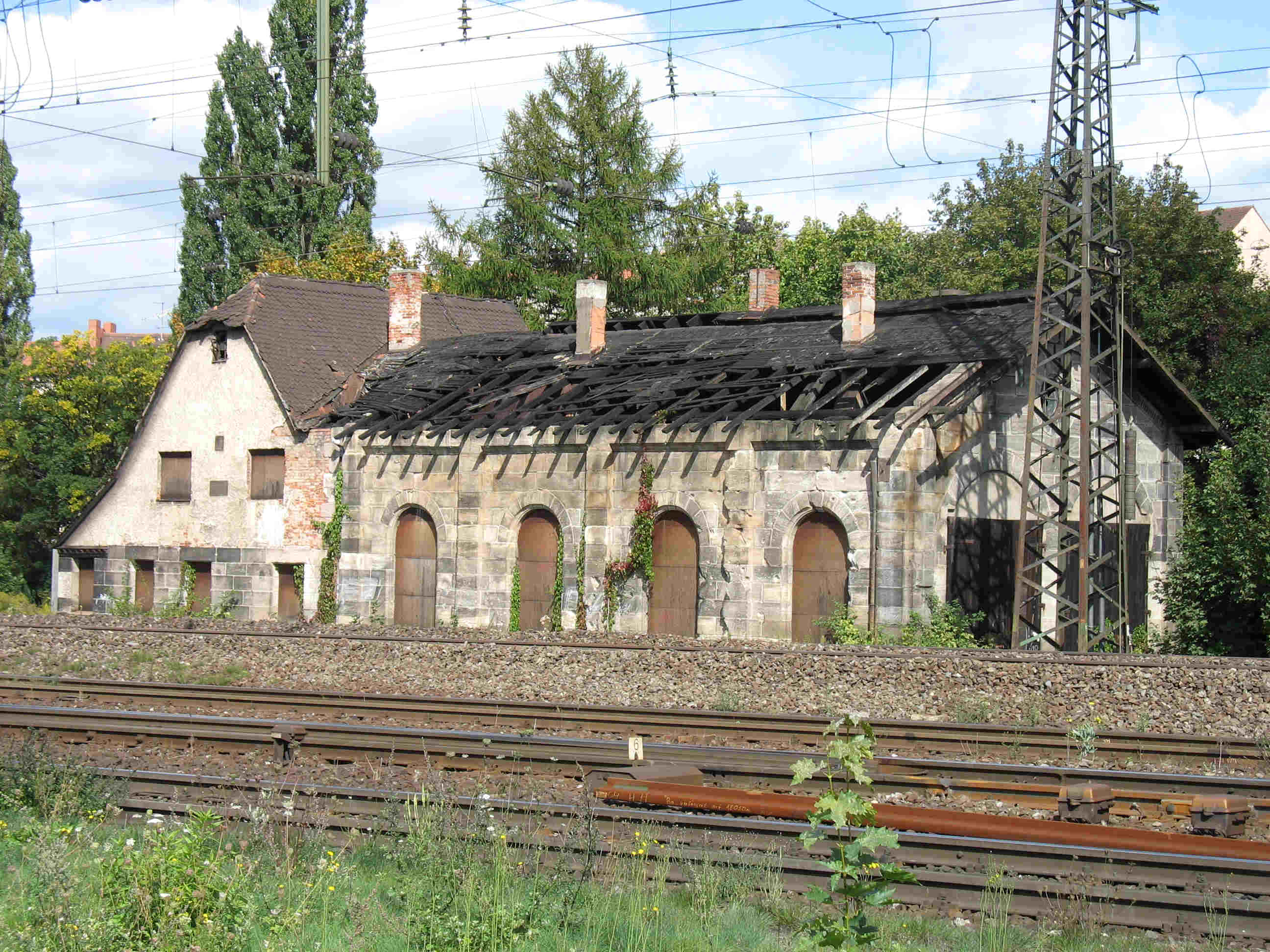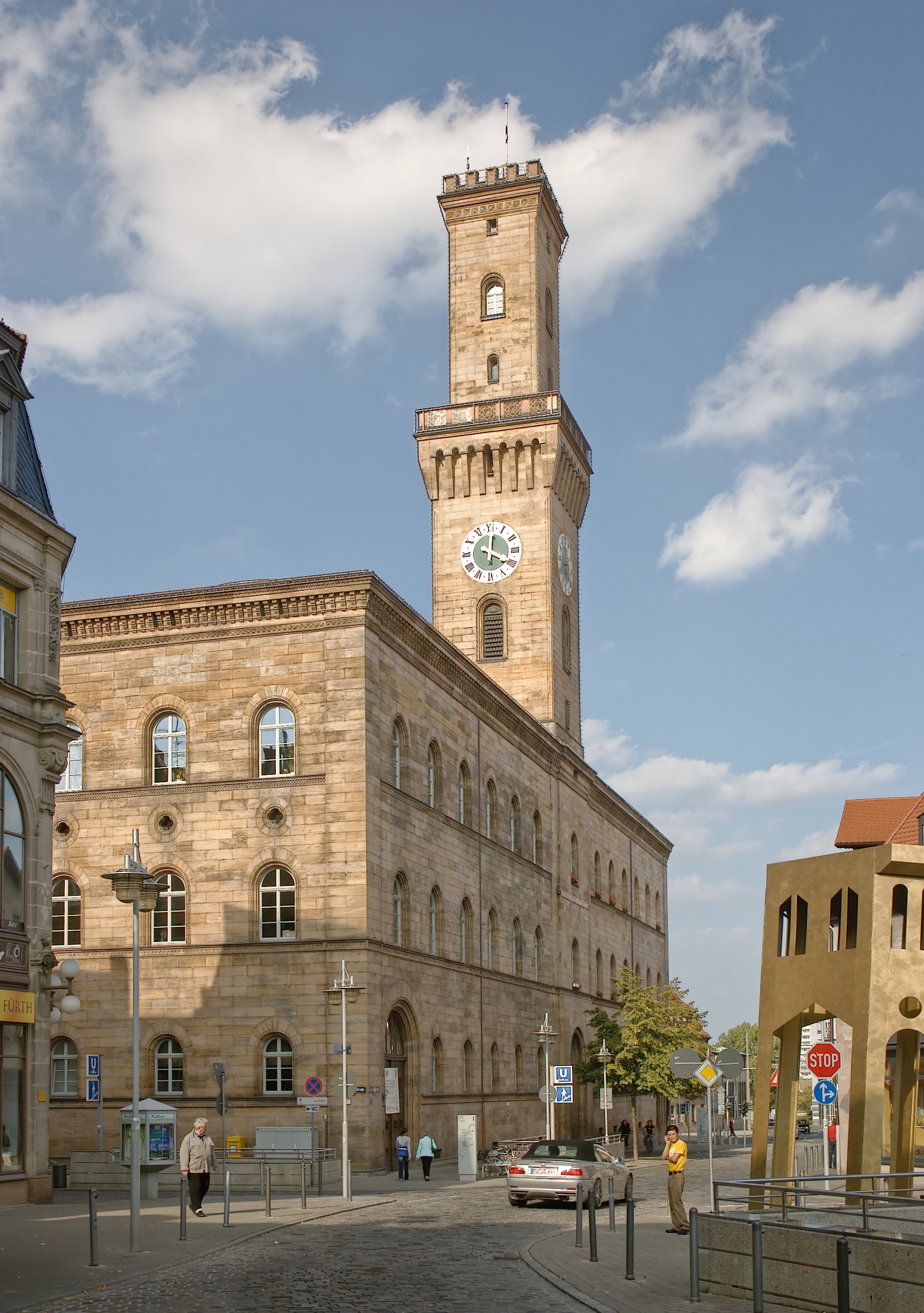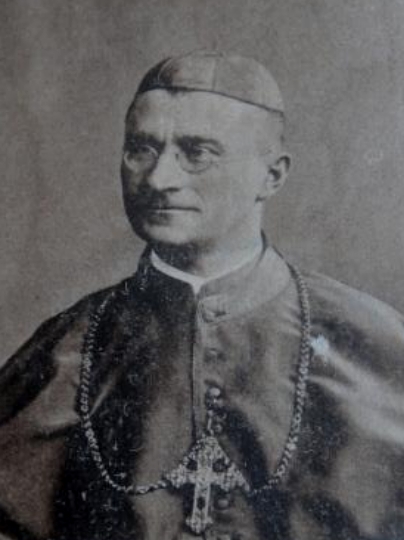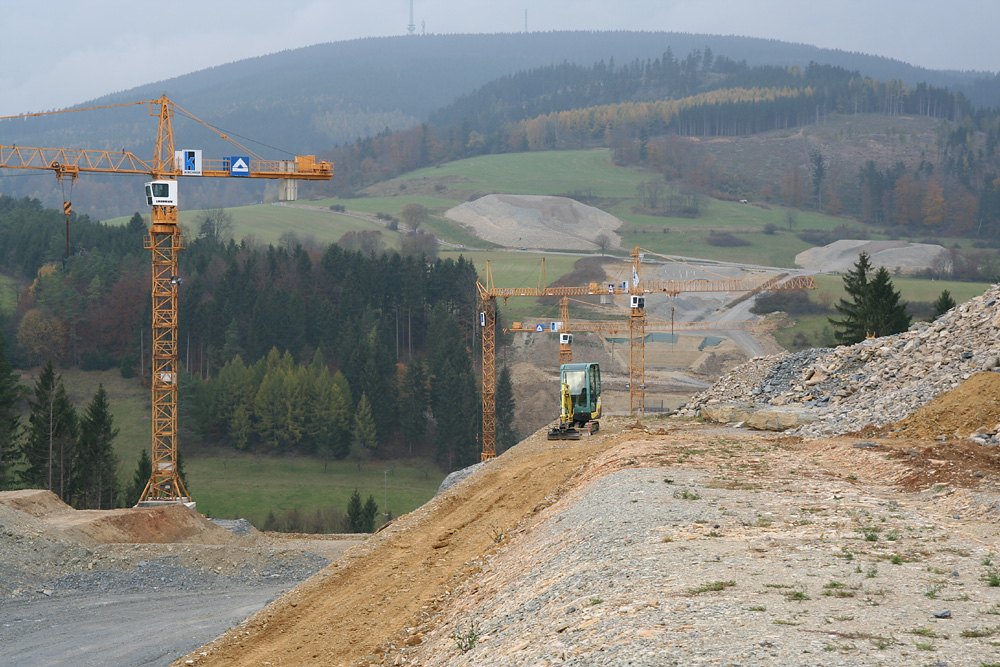|
Nuremberg–Bamberg Railway
The Nuremberg-Bamberg line is a German railway connecting the Bavarian city of Nuremberg with Bamberg via Fürth, Erlangen, Forchheim. It is part of the northern section of the Ludwig South-North Railway. It runs along the Regnitz Valley and is one of the important German transport routes. Since 2010 line S1 of the Nuremberg S-Bahn uses the entirety of the line from Nuremberg to Bamberg. The line has become important for long-distance services since German reunification and this has increased since the opening of the Nuremberg–Erfurt high-speed line in 2017. As part of German Unity Transport Project No. 8 (''Verkehrsprojekts Deutsche Einheit Nr. 8''), it is being upgraded as an extension of the new line between Ebensfeld and Erfurt. It is mostly quadruple track with the exception of small sections in northern Fürth and south of Bamberg that are double track. History After the Bavarian parliament had passed a bill for the construction of the Ludwig South–North Railway on 2 ... [...More Info...] [...Related Items...] OR: [Wikipedia] [Google] [Baidu] |
Passenger Rail Terminology
Various terms are used for passenger railway lines and equipment; the usage of these terms differs substantially between areas: Rapid transit A rapid transit system is an electric railway characterized by high speed (~) and rapid acceleration. It uses passenger railcars operating singly or in multiple unit trains on fixed rails. It operates on separate rights-of-way from which all other vehicular and foot traffic are excluded (i.e. is fully grade-separated from other traffic). It uses sophisticated signaling systems, and high platform loading. Originally, the term ''rapid transit'' was used in the 1800s to describe new forms of quick urban public transportation that had a right-of-way separated from street traffic. This set rapid transit apart from horsecars, trams, streetcars, omnibuses, and other forms of public transport. A variant of the term, ''mass rapid transit (MRT)'', is also used for metro systems in Southeast Asia and Taiwan. Though the term was almost alway ... [...More Info...] [...Related Items...] OR: [Wikipedia] [Google] [Baidu] |
Fürth
Fürth (; East Franconian: ; yi, פיורדא, Fiurda) is a city in northern Bavaria, Germany, in the administrative division (''Regierungsbezirk'') of Middle Franconia. It is now contiguous with the larger city of Nuremberg, the centres of the two cities being only apart. Fürth is one of 23 "major centres" in Bavaria. Fürth, Nuremberg, Erlangen and some smaller towns form the "Middle Franconian Conurbation", which is one of the 11 German metropolitan regions. Fürth celebrated its thousand year anniversary in 2007, its first mention being on 1 November 1007. Geography The historic centre of the town is to the east and south of the rivers Rednitz and Pegnitz, which join to form the Regnitz to the northwest of the Old Town. To the west of the town, on the far side of the Main-Danube Canal, is the Fürth municipal forest (''Fürther Stadtwald''). To the east of Fürth, at roughly the same latitude, lies Nuremberg, and to the north is the fertile market-gardening area know ... [...More Info...] [...Related Items...] OR: [Wikipedia] [Google] [Baidu] |
Bavarian Ludwig Railway
The Bavarian Ludwig Railway (''Bayerische Ludwigseisenbahn'' or ''Ludwigsbahn'') was the first steam-hauled railway opened in Germany. The ''Königlich privilegierte Ludwigs-Eisenbahn-Gesellschaft'' ("Royal Privileged Ludwig Railway Company", later called the ''Ludwigs-Eisenbahn-Gesellschaft'') received a concession to build a railway from Nuremberg to Fürth (6km) in the state of Bavaria on 19 February 1834. Background The first reports from England over the planning of railways attracted great attention in Germany, particularly in Bavaria, where the road between the important commercial cities of Nuremberg and Fürth was the busiest road connection in the kingdom. Bavarian interest was also stimulated by Friedrich List’s advocacy of an all-German railway system and the reports of Joseph von Baader, whom King Ludwig had sent to England to study railways. After a discussion of this topic in the Bavarian parliament in 1825, it authorised the king to build an experimental ra ... [...More Info...] [...Related Items...] OR: [Wikipedia] [Google] [Baidu] |
Nuremberg–Würzburg Railway
The Nuremberg–Würzburg Railway is a German trunk line railway in northern Bavaria, connecting the city of Nuremberg with Würzburg, the two largest cities in Franconia, and passing through Fürth, Neustadt an der Aisch and Kitzingen. In addition to hourly Regional-Express trains and numerous freight trains, it is served by Intercity-Express trains during the day at half-hourly intervals with some gaps. Route description On its total length of just over 100 kilometres, the railway line has a total of 18 stations. The two endpoints of the line, Nuremberg Hbf and Würzburg Hbf, are served by fast long-distance services. The line runs through more than 80 curves in a landscape of low ranges. History The 86 km stretch from Fürth to Rottendorf near Würzburg was built in as a shortcut between the Ludwig South-North Railway in Nuremberg and Ludwig's Western Railway line in Wurzburg. This shortened the 155 km-long indirect route via Bamberg and Schweinfurt. ... [...More Info...] [...Related Items...] OR: [Wikipedia] [Google] [Baidu] |
Erfurt
Erfurt () is the capital and largest city in the Central German state of Thuringia. It is located in the wide valley of the Gera river (progression: ), in the southern part of the Thuringian Basin, north of the Thuringian Forest. It sits in the middle of an almost straight line of cities consisting of the six largest Thuringian cities forming the central metropolitan corridor of the state, the "Thuringian City Chain" ('' Thüringer Städtekette'') with more than 500,000 inhabitants, stretching from Eisenach in the west, via Gotha, Erfurt, Weimar and Jena, to Gera in the east. Erfurt and the city of Göttingen in southern Lower Saxony are the two cities with more than 100,000 inhabitants closest to the geographic center of Germany. Erfurt is located south-west of Leipzig, north-east of Frankfurt, south-west of Berlin and north of Munich. Erfurt's old town is one of the best preserved medieval city centres in Germany. Tourist attractions include the Merchants' Bridge (''K ... [...More Info...] [...Related Items...] OR: [Wikipedia] [Google] [Baidu] |
Ebensfeld
Ebensfeld is a Municipalities of Germany, municipality in the district of Lichtenfels (district), Lichtenfels in Bavaria in Germany. It lies on the river Main (river), Main. Sons and daughters of the town * Georg Meixner (1887-1960), German Catholic priest and Bavarian politician * Rudolf Lunkenbein (1939-1976), German Salesian and missionary in Brazil * Johann Andreas Seelmann (1732-1789), was from 1771 until his death Bishop in the Diocese of Speyer * Johann Baptist Dietz (1879-1959), was a Roman Catholic theologian and 1939-1958 Bishop of the diocese Fulda * Adam Senger (1860-1935), was auxiliary bishop of Bamberg References External links * Lichtenfels (district) {{Lichtenfels-geo-stub ... [...More Info...] [...Related Items...] OR: [Wikipedia] [Google] [Baidu] |
Nuremberg–Erfurt High-speed Railway
The Nuremberg–Erfurt high-speed railway is a German high-speed railway, between Nuremberg and Erfurt. The line is listed in Germany's federal transport plan as ''Verkehrsprojekt Deutsche Einheit Nr.'' ("German Unity transport project no") ''8.1'' and is a section of the high-speed route between Berlin and Munich and a section of the line connecting Italy and Scandinavia in the European Union's Trans-European Rail network. It consists of an upgraded line between Nuremberg and Ebensfeld and a new line between Ebensfeld and Erfurt. The journey time between Erfurt and Nuremberg will be reduced to approximately one hour and 20 minutes after completion. The planning began in 1991 and construction started in April 1996. Three years later construction was stopped by the new SPD-Green coalition government formed after the 1998 election and only recommenced in 2002. The new line was opened at the timetable change on 10 December 2017. The timing of the final commissioning of the upgr ... [...More Info...] [...Related Items...] OR: [Wikipedia] [Google] [Baidu] |
German Reunification
German reunification (german: link=no, Deutsche Wiedervereinigung) was the process of re-establishing Germany as a united and fully sovereign state, which took place between 2 May 1989 and 15 March 1991. The day of 3 October 1990 when the German Reunification Treaty entered into force dissolving the German Democratic Republic (GDR; german: link=no, Deutsche Demokratische Republik, DDR, or East Germany) and integrating its recently re-established constituent federated states into the Federal Republic of Germany (FRG; german: link=no, Bundesrepublik Deutschland, BRD, or West Germany) to form present-day Germany, has been chosen as the customary ''German Unity Day'' () and has thereafter been celebrated each year from 1991 as a national holiday. East and West Berlin were united into a single city and eventually became the capital of reunited Germany. The East Germany's government led by the Socialist Unity Party of Germany (SED) (a communist party) started to falter on 2 May 1 ... [...More Info...] [...Related Items...] OR: [Wikipedia] [Google] [Baidu] |
S1 (Nuremberg S-Bahn)
The S1 is a service on the Nuremberg S-Bahn. It is long and runs from Bamberg via Erlangen, Fürth and Nuremberg to Hartmannshof. History The line opened on September 26th 1987 with initial service from Nuremberg main station to Lauf (links der Pegnitz). With the December 2010 schedule change, it was extended to Bamberg via Fürth and Erlangen. Upgrades and service extensions In the course of the VDE8 Nuremberg–Erfurt high-speed railway, the existing line between Bamberg and Nuremberg is extended to quadruple tracks. However, within the city boundaries of Fürth this planned upgrade ran into problems. As the original plans called for the two S-Bahn tracks to be laid east of the existing line to connect a (then planned but since scrapped) new industrial development between the cities of Nuremberg Fürth and Erlangen, the existing station of "Vach" would have lost passenger rail service and would have been replaced with two new stations called "Fürth Steinach" and "Fürth Stad ... [...More Info...] [...Related Items...] OR: [Wikipedia] [Google] [Baidu] |








